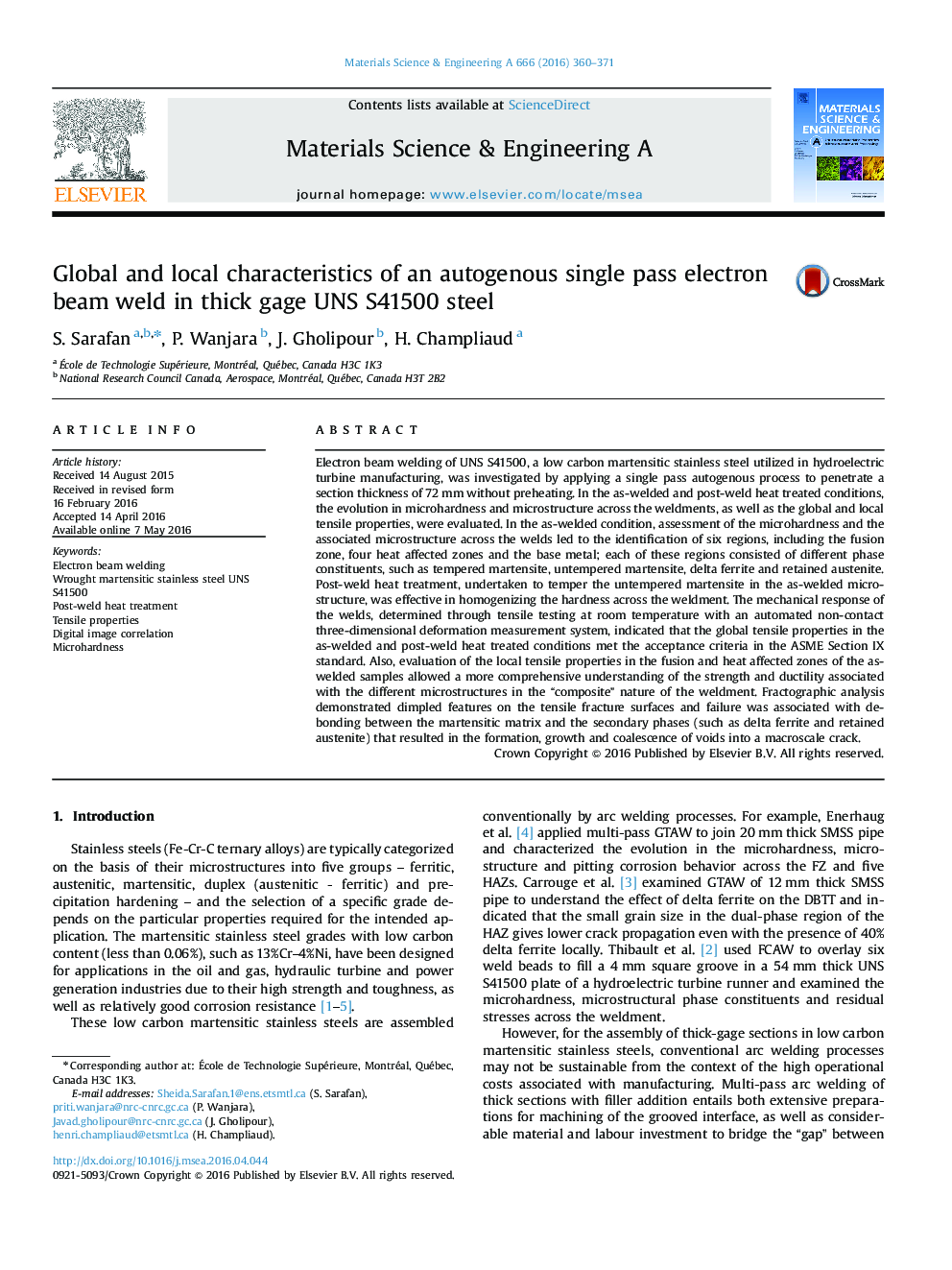| کد مقاله | کد نشریه | سال انتشار | مقاله انگلیسی | نسخه تمام متن |
|---|---|---|---|---|
| 7975458 | 1514677 | 2016 | 12 صفحه PDF | دانلود رایگان |
عنوان انگلیسی مقاله ISI
Global and local characteristics of an autogenous single pass electron beam weld in thick gage UNS S41500 steel
دانلود مقاله + سفارش ترجمه
دانلود مقاله ISI انگلیسی
رایگان برای ایرانیان
کلمات کلیدی
موضوعات مرتبط
مهندسی و علوم پایه
مهندسی مواد
دانش مواد (عمومی)
پیش نمایش صفحه اول مقاله

چکیده انگلیسی
Electron beam welding of UNS S41500, a low carbon martensitic stainless steel utilized in hydroelectric turbine manufacturing, was investigated by applying a single pass autogenous process to penetrate a section thickness of 72Â mm without preheating. In the as-welded and post-weld heat treated conditions, the evolution in microhardness and microstructure across the weldments, as well as the global and local tensile properties, were evaluated. In the as-welded condition, assessment of the microhardness and the associated microstructure across the welds led to the identification of six regions, including the fusion zone, four heat affected zones and the base metal; each of these regions consisted of different phase constituents, such as tempered martensite, untempered martensite, delta ferrite and retained austenite. Post-weld heat treatment, undertaken to temper the untempered martensite in the as-welded microstructure, was effective in homogenizing the hardness across the weldment. The mechanical response of the welds, determined through tensile testing at room temperature with an automated non-contact three-dimensional deformation measurement system, indicated that the global tensile properties in the as-welded and post-weld heat treated conditions met the acceptance criteria in the ASME Section IX standard. Also, evaluation of the local tensile properties in the fusion and heat affected zones of the as-welded samples allowed a more comprehensive understanding of the strength and ductility associated with the different microstructures in the “composite” nature of the weldment. Fractographic analysis demonstrated dimpled features on the tensile fracture surfaces and failure was associated with debonding between the martensitic matrix and the secondary phases (such as delta ferrite and retained austenite) that resulted in the formation, growth and coalescence of voids into a macroscale crack.
ناشر
Database: Elsevier - ScienceDirect (ساینس دایرکت)
Journal: Materials Science and Engineering: A - Volume 666, 1 June 2016, Pages 360-371
Journal: Materials Science and Engineering: A - Volume 666, 1 June 2016, Pages 360-371
نویسندگان
S. Sarafan, P. Wanjara, J. Gholipour, H. Champliaud,